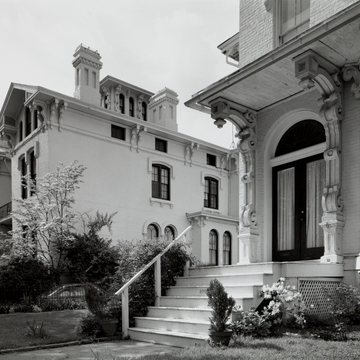Cooke's Row represents the last phase in the efflorescence of the Italian Villa style in the heights of Georgetown. At the same time, it also is one of the few examples of the Second Empire style in the neighborhood. As a group, the row presents an irregular, picturesque silhouette in an area otherwise defined by geometric forms and many common cornice lines. Georgetown banker Henry David Cooke commissioned the group of four duplex row houses set back from the north side of Q Street. It was designed by the architectural and engineering firm of Starkweather and Plowman, which made its mark in the area with the Theological Seminary in Alexandria and several private schools and churches in Georgetown. The row included Second
You are here
Cooke's Row
1868–1869, Starkweather and Plowman. 3000 block of Q St. NW
If SAH Archipedia has been useful to you, please consider supporting it.
SAH Archipedia tells the story of the United States through its buildings, landscapes, and cities. This freely available resource empowers the public with authoritative knowledge that deepens their understanding and appreciation of the built environment. But the Society of Architectural Historians, which created SAH Archipedia with University of Virginia Press, needs your support to maintain the high-caliber research, writing, photography, cartography, editing, design, and programming that make SAH Archipedia a trusted online resource available to all who value the history of place, heritage tourism, and learning.

